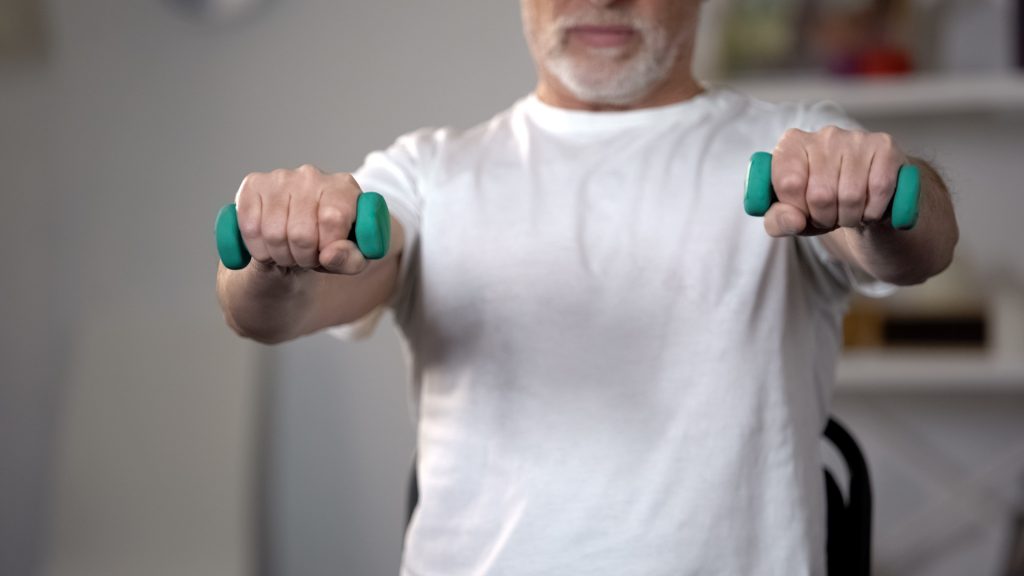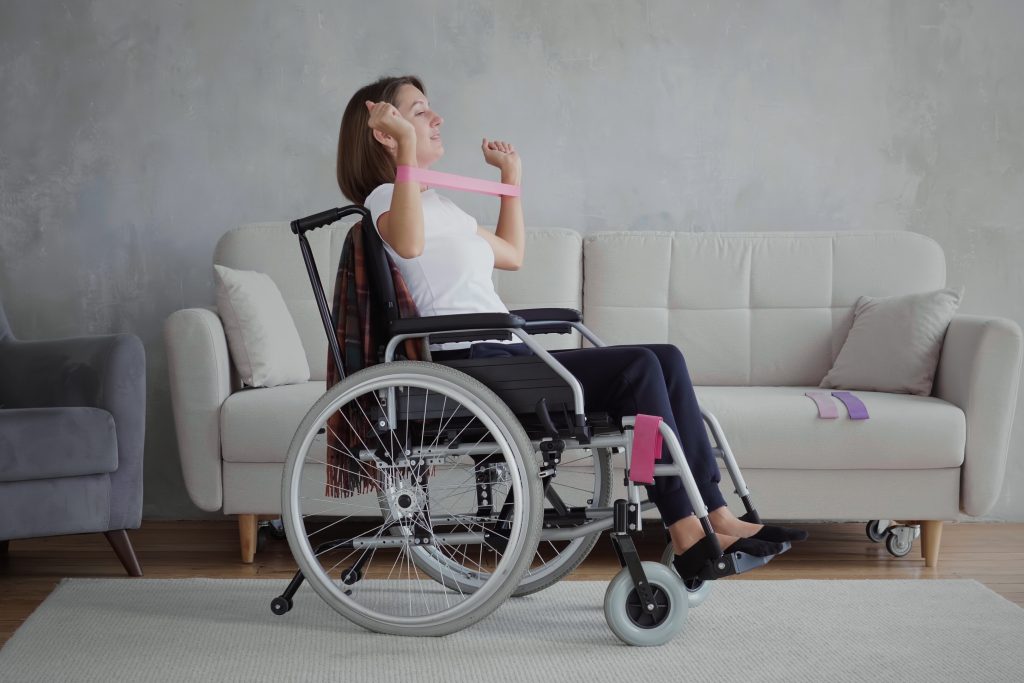Seated exercises for wheelchair bound people
When most people think of exercise, they automatically think of typical activities like walking, running, playing sports, etc. But for people who use a wheelchair, these options are often either impractical or out of the question entirely. However, regular exercise is just as important for wheelchair users as it is for anyone else. The wheelchair exercises outlined below are all suitable seated exercises for disabled people, including elderly wheelchair users.
Front raises
Front raises are a great way of developing arm muscles and building strength in the arms, something that is obviously very important for a wheelchair user. The simplest way of doing this is to find a heavy object – regular handheld weights work well, but anything you can safely hold is fine. You need to lift the weight over your head, first with straight arms and then bent arms. Then, keeping your arms in front of you, bend your elbows and use your biceps to pull the weight towards your body.

Shoulder retractions
Shoulder retractions are one of the best exercises for a person who uses a wheelchair and are a fantastic choice for anyone looking for seated exercises for seniors in particular.
Start by sitting up straight and holding your arms straight in front of you (perpendicular to your shoulders), with your hands facing down and your fingers curled as if gripping handlebars. Now, push your arms straight out, extending them as far as you can without causing the joints to lock. Next, bend your elbows while slowly pulling your arms back. Keep going until your elbows are behind your torso, and squeeze your shoulder blades together as you go. Repeat the motion as necessary.
Chest squeezes
These exercises can be done with or without an exercise ball. In either case, begin sitting in an upright position with your abdominal muscles engaged in supporting your back muscles. If you’re using a ball, hold it at chest level and squeeze it between your hands, causing the chest muscles to contract. If you aren’t using a ball, press your palms together instead. You then want to slowly push the ball or your palms forward, making sure to keep squeezing throughout the entire movement before slowly bringing them back to your chest.
Chest presses using resistance bands
Like lots of exercises for a wheelchair-bound person, these ones use a resistance band. If you don’t own a resistance band, they are worth investing in and could transform your workout routine.

Wrap the band around the back of your wheelchair or just below your shoulder blades. Hold each end of the resistance band and place your arms perpendicular to your shoulders with your palms facing downwards. Extend your arms in front of you as far as you can without your joints locking. Try to hold each stretch for just a couple of seconds before bringing your arms back to your chest.
Toe taps
Start by sitting upright with your feet flat on the floor. Then, simply tilt your toes upward toward the ceiling and let them fall back to the floor. You can increase the difficulty by raising one leg while keeping the other on the floor and tilting the toes on the raised leg before switching over.
Knee lifts
Start the same way as with the toe taps; back straight and feet flat on the floor. Next, lift one leg slowly and bend your knee in a marching motion. Once your leg is as high as you can comfortably raise it, lower your foot back to the floor and repeat with the other leg. You can increase the difficulty by pausing at the top of the motion for 2-10 seconds, depending on your comfort level.
Tummy twists
Sit straight with your feet both flat on the ground and your forearms extended while your elbows remain at your sides. Twisting at the waist, turn your body from side to side as far as you can comfortably manage. After each twist, return to the centre before twisting in the opposite direction.
These chair exercises are a great place to start if you’re looking for seated exercises for the elderly. Keeping fit and active is important for everyone, including people confined to a wheelchair and those with limited mobility. You might not feel the benefits immediately, but regular exercise offers plenty of rewards.


